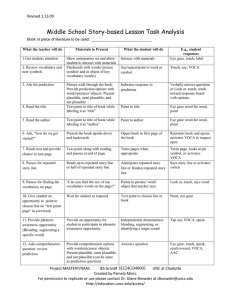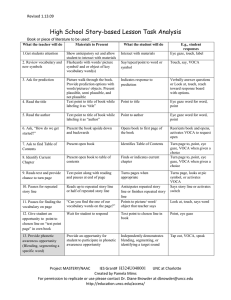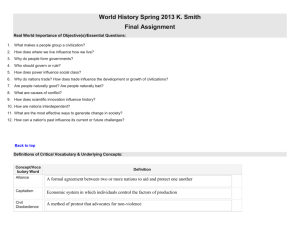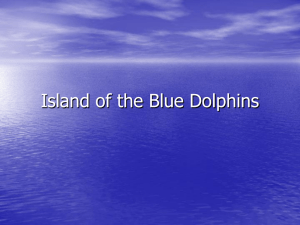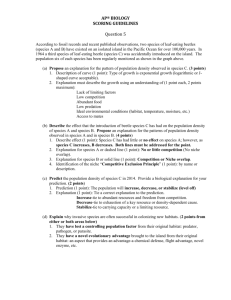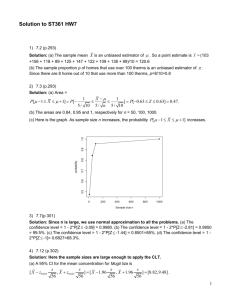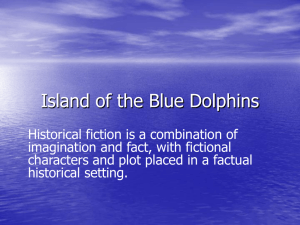Sample Middle School Story-based Lesson Task Analysis Book or
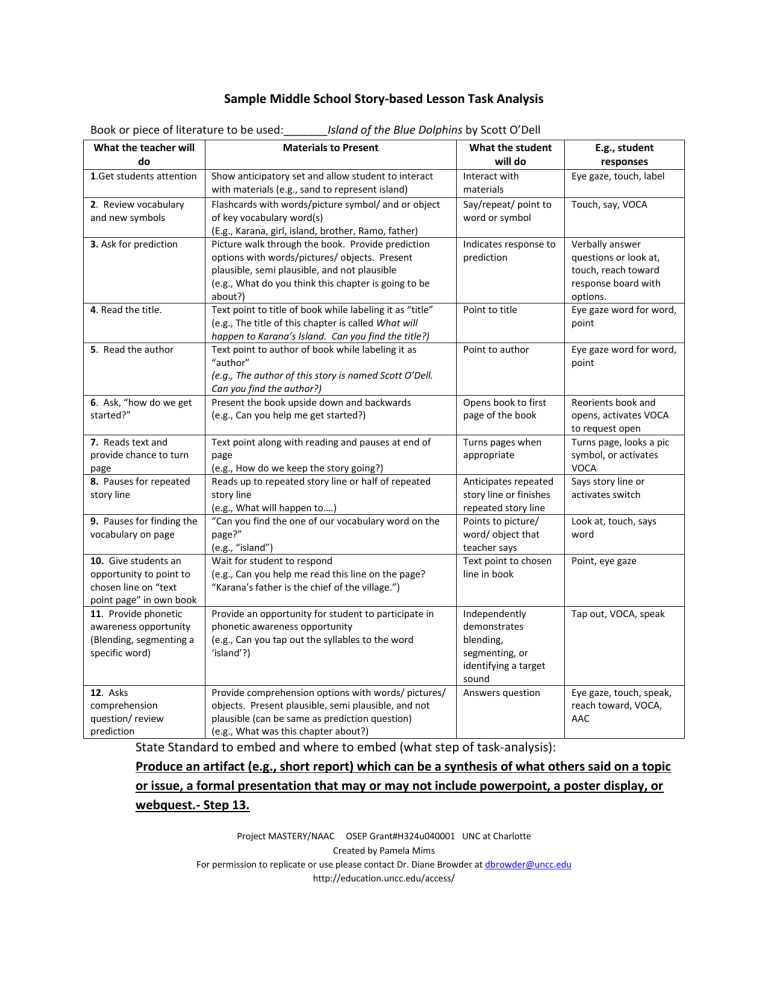
Sample Middle School Story-based Lesson Task Analysis
Book or piece of literature to be used:_______Island of the Blue Dolphins by Scott O’Dell
What the teacher will do
Materials to Present
1.Get students attention Show anticipatory set and allow student to interact with materials (e.g., sand to represent island)
2. Review vocabulary and new symbols
3. Ask for prediction
4. Read the title.
5. Read the author
6. Ask, “how do we get started?”
Flashcards with words/picture symbol/ and or object of key vocabulary word(s)
(E.g., Karana, girl, island, brother, Ramo, father)
Picture walk through the book. Provide prediction options with words/pictures/ objects. Present plausible, semi plausible, and not plausible
(e.g., What do you think this chapter is going to be about?)
Text point to title of book while labeling it as “title”
(e.g., The title of this chapter is called What will happen to Karana’s Island. Can you find the title?)
Text point to author of book while labeling it as
“author”
(e.g., The author of this story is named Scott O’Dell.
Can you find the author?)
Present the book upside down and backwards
(e.g., Can you help me get started?)
What the student will do
Interact with materials
Say/repeat/ point to word or symbol
Indicates response to prediction
Point to title
Point to author
Opens book to first page of the book
E.g., student responses
Eye gaze, touch, label
Touch, say, VOCA
Verbally answer questions or look at, touch, reach toward response board with options.
Eye gaze word for word, point
Eye gaze word for word, point
7. Reads text and provide chance to turn page
8. Pauses for repeated story line
9. Pauses for finding the vocabulary on page
Text point along with reading and pauses at end of page
(e.g., How do we keep the story going?)
Reads up to repeated story line or half of repeated story line
(e.g., What will happen to….)
“Can you find the one of our vocabulary word on the page?”
(e.g., “island”)
Wait for student to respond
(e.g., Can you help me read this line on the page?
“Karana’s father is the chief of the village.”)
Turns pages when appropriate
Anticipates repeated story line or finishes repeated story line
Points to picture/ word/ object that teacher says
Text point to chosen line in book
10. Give students an opportunity to point to chosen line on “text point page” in own book
11. Provide phonetic awareness opportunity
(Blending, segmenting a specific word)
Provide an opportunity for student to participate in phonetic awareness opportunity
(e.g., Can you tap out the syllables to the word
‘island’?)
Independently demonstrates blending, segmenting, or identifying a target sound
12. Asks comprehension question/ review prediction
Provide comprehension options with words/ pictures/ objects. Present plausible, semi plausible, and not plausible (can be same as prediction question)
(e.g., What was this chapter about?)
Answers question
State Standard to embed and where to embed (what step of task-analysis):
Reorients book and opens, activates VOCA to request open
Turns page, looks a pic symbol, or activates
VOCA
Says story line or activates switch
Look at, touch, says word
Point, eye gaze
Tap out, VOCA, speak
Eye gaze, touch, speak, reach toward, VOCA,
AAC
Produce an artifact (e.g., short report) which can be a synthesis of what others said on a topic or issue, a formal presentation that may or may not include powerpoint, a poster display, or webquest.- Step 13.
Project MASTERY/NAAC OSEP Grant#H324u040001 UNC at Charlotte
Created by Pamela Mims
For permission to replicate or use please contact Dr. Diane Browder at dbrowder@uncc.edu
http://education.uncc.edu/access/
